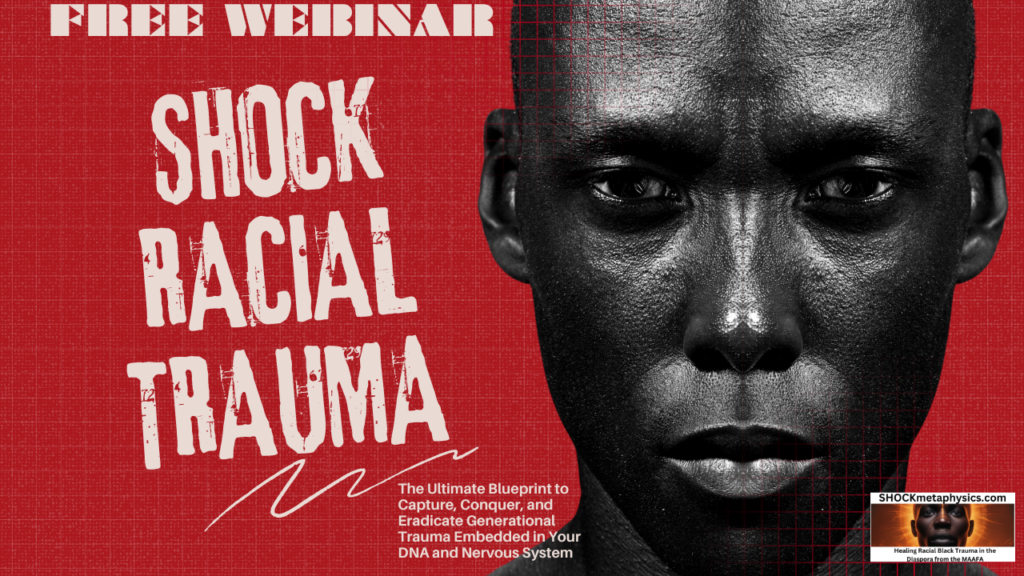
Powered By BlackTraumaGPT.com
Researched and Curated By Rev. Dr. Philippe SHOCK Matthews – https://solo.to/revshock | https://linktr.ee/revshock (Black Trauma and Mental Health Specialist | Prompt Eng | GPT Dev | Research Scientist | Africana Phenomenologist | Black Mental Health Podcast Host | FREE Webinar)
An Analysis Inspired by Michael B. Jordan’s Embodiment of Black Pain and Hope
In the conceptual film Sinners, Michael B. Jordan delivers a harrowing, emotionally resonant portrayal of a Black man grappling with generational trauma, systemic oppression, and the search for redemption. Though fictional, Sinners acts as a necessary mirror reflecting the ongoing wounds of the African diaspora — wounds originating from the MAAFA (the Black Holocaust) and continuing through the violent legacies of racism, dehumanization, and erasure. Jordan’s character does not simply suffer; he embodies the multilayered, intergenerational weight of Black existence in a society still structured by anti-Blackness.
At its core, Sinners invites viewers to engage with what Dr. Joy DeGruy terms “Post Traumatic Slave Syndrome,” a set of adaptive survival behaviors developed in response to centuries of racialized trauma. Jordan’s performance is a masterclass in silent endurance; every look, every slumped shoulder, every clenched fist signifies the unspoken, often unseen burden of surviving under the gaze of a world that criminalizes Blackness at every turn. His journey echoes the realities that scholars like Dr. William A. Smith describe in “racial battle fatigue” — the emotional, psychological, and physiological toll exacted on Black bodies forced to navigate constant racialized stressors.
The narrative structure of Sinners intentionally disrupts linear storytelling, using fragmented memories, ancestral flashbacks, and dream sequences to represent the fractured psyche of the Black soul under siege. This technique honors Africana phenomenology — the exploration of Black lived experience as fundamentally shaped by histories of colonialism, captivity, and resilience. Through his character’s disjointed perception of time and space, Sinners captures the dislocation and displacement that Fanon so powerfully described in Black Skin, White Masks — the sense of existing as an “other” within one’s own homeland.
In portraying the cyclical nature of violence and grief within Black communities, Sinners resists the reductionist trope of the “broken Black family.” Instead, it compassionately reveals how systemic forces — from mass incarceration to economic disenfranchisement to overpolicing — rip apart the social fabric while simultaneously showcasing the stubborn, tenacious love that sustains Black life. Jordan’s character is not a passive victim; he fights to heal, to build, to reclaim his narrative even as he stumbles through his pain. His arc refuses the notion that Black suffering is inevitable; instead, it positions healing as a revolutionary, communal act.
Crucially, Sinners also foregrounds Black spirituality, ancestral memory, and collective dreaming as essential tools for survival and liberation. Scenes of Jordan’s character participating in communal rituals, prayer circles, and memory-keeping practices recall the work of thinkers like Dr. Thema Bryant and Dr. Shelly Harrell, who emphasize the need for culturally grounded healing spaces. Through these portrayals, Sinners affirms that Black trauma cannot be healed through individualism alone — it requires a collective return to community, to memory, to spirit.
Ultimately, Sinners stands as a radical intervention in cinematic depictions of Black trauma. Rather than exploiting Black pain for spectacle or pity, it demands that audiences bear witness with reverence, understanding that every scar is also a site of resistance. Michael B. Jordan’s fearless, tender performance reminds us that to be Black in America is both to carry unbearable grief and to embody unbreakable hope. In telling this story, Sinners becomes more than a film — it becomes an offering, a site of healing, and a call to action.

FREE SHOCK RACIAL TRAUMA WEBINAR: http://shocktraumafreewebinar.com

“I just completed a brief session with ChatGPT-Black Trauma. Wow! The responses I got were soooooo helpfu!.” — John Jackson (Patreon Member)
At BlackTraumaGPT.com, we aim to foster healing, understanding, and empowerment within Black communities by providing culturally sensitive education, insights, and mental health resources. We aim to deepen the collective awareness of Black trauma’s historical roots and its contemporary manifestations while guiding individuals and communities toward paths of self-care, resilience, and holistic healing. By leveraging the wisdom of Africana phenomenology and the expertise of Black scholars, we support the transformation of trauma into strength, encouraging collective growth and thriving.
IT’S TIME TO BREAK BLACK TRAUMA! Heal Thyself @ BlackTraumaGPT.com http://blacktraumagpt.com/ ASK THE QUESTION(S)!
———————
Get Social with Doc SHOCK:
PATREON | ABOUT DR. SHOCK | FLY SOLO | ACADEMIC BIO | BLOG | BLACK TRAUMA PODCAST | ENDORSEMENT | THREADS | IG | FB PAGE | PRIVATE GROUP | X | LINKEDIN | TIKTOK | PINTEREST | BLACK TRAUMA GPT | BLACK AI CONSORTIUM | BOOKS BY DOC SHOCK

